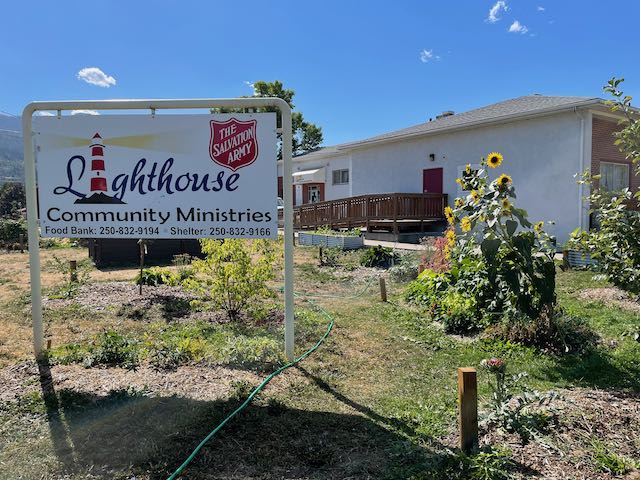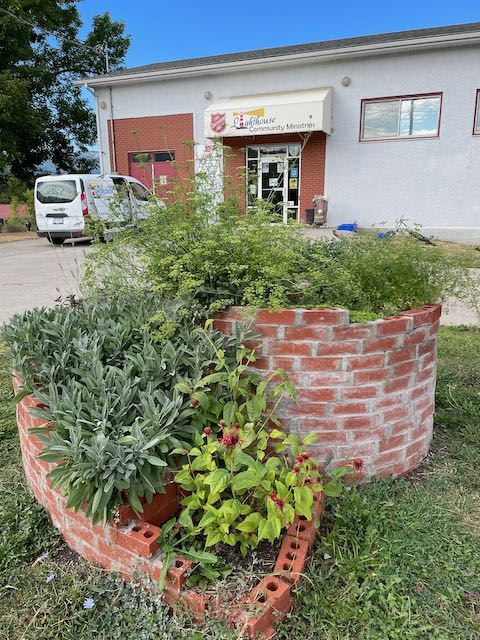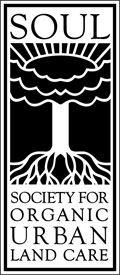2022 Greener Greenspace Profile
Lighthouse Community Food Forest
Located in Salmon Arm, the Lighthouse Community Food Forest is in part a food forest, habitat for pollinators and a community garden.
Design and Process The Lighthouse Community Food Forest project started in 2021 as a collaboration between the Salvation Army’s Lighthouse Ministries, Shuswap Food Action and Lekker Land Design to address local food security. The greenspace outside the Salvation Army’s food bank was a monoculture lawn at the time, but community leaders envisioned an edible garden to grow food and engage the community. Transformed by Permaculture Design and Program Manager Keli Westgate from Lekker Land Design, the space includes a diversity of perennial, annual and edible flowers, nitrogen-fixers, vegetables, fruit trees, berry bushes, and dynamic accumulators. Overall, there are now more than fifty diverse and interconnected plant species. Most plants are edible or medicinal, and attract pollinators. Six trees were added to the space to produce food, provide shade and add leaf mulch to protect the soil. To support soil health, comfrey and clover were planted as chop-and-drop plants to add nutrients to the soil There is a 3-bin compost system for the organic waste to be handled on-site. The fruit trees were planted in guilds with support plants to draw nutrients from the clay soil. The compost system at the centre of the space eliminates the need to haul organic material from the site to a landfill or another facility. The "hugelkultur" method was used to build soil in the raised beds and includes some biochar to create homes for beneficial microorganisms and sequester carbon. A rainwater catchment system provides non-chlorinated water for the plants. Even within a short period of time, worms, bees and butterflies that were not there before have appeared. Community Collaboration This site is centrally located and acts as a community hub addressing food security. One staff person at the Salvation Army was hired to organize events and manage the greenspace, and the Shuswap Food Action Society helps organize volunteers. The community surrounding the food forest has appreciated the site’s transformation and is especially curious about the hugelkultur mounds and herb spiral. Events such as seed and seedling planting encourage volunteers to come out to support the food forest and learn about the approach taken to create and care for the greenspace. Every month starting in April, there is an educational tour of the food forest that includes a component to teach permaculture principles and update and improve upon "conventional" ways of gardening. A "Captain's Log" manual for the site explains these values to future caretakers of the site. For interest, a "food tunnel" was created at the entrance so visitors could walk under and grab a cucumber or bean on their way by. This has proven very popular. As the food forest grows, they will be able to share plants since they will spread and need to be thinned out. The fruit and other food are available for fresh picking by passersby, and everything grown is offered free to the community. For more information on the Lighthouse Community Food Forest, visit Lekker Land Design website. |    Photos c/o Lekker Land Design |
Greener Greenspaces is a recognition program for sites from across Canada that exemplify greener greenspace stewardship. The aim of the program is to showcase examples of ecologically-focused land care as a means to inspire others and to further the movement across Canada.
See the full list of 2022 recognition recipients here
.JPG)